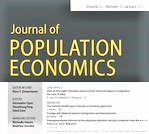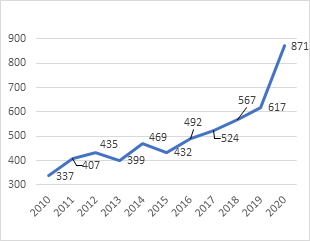Europe decided to abolish daylight saving time in 2021, since the save energy impact is debatable; but so far concrete actions remained elusive. Some evidence should not be overlooked. Based on natural experiments: Stratified demographic analyses for Indiana/USA indicate that daylight saving time had reduced mortality among males, females, and whites, but only among those aged 65 years and older. For Montevideo/Uruguay research identified a strong and statistically significant decrease in robbery. Two articles in the Journal of Population Economics take up these issues.
The Global Labor Organization (GLO) is an independent, non-partisan and non-governmental organization that functions as an international network and virtual platform to stimulate global research, debate and collaboration.

The Unequal Impact of Natural Light on Crime – Download PDF
by Tealde, Emiliano
NOW Published ONLINE FIRST 2021: Journal of Population Economics. FREE READ LINK: https://rdcu.be/ciWkX
GLO Fellow Emiliano Tealde
Author Abstract: This paper studies the relationship between ambient light and criminal activity. A Becker-style crime model is developed where it is shown that in areas with less public lighting a sudden increase in ambient light produces a higher reduction in crime. The Daylight Saving Time, the natural experiment used, induces a sharp increase in natural light during crime-intense hours. Using geolocated data on crime and public lighting for the city of Montevideo in Uruguay, regression discontinuity estimates identify a strong and statistically significant decrease in robbery of 17-percent. The decrease is larger in poorly lit areas. Computing the level of public lighting at which DST has no effect on crime reduction, we identify the minimum level of public lighting that an area should target.
Saving lives: the 2006 expansion of daylight saving in Indiana
by Adam Cook
Published ONLINE FIRST 2021: Journal of Population Economics FREE READ LINK: https://rdcu.be/ciWlD

Author Abstract: Using data provided by the Indiana State Department of Vital Statistics, this study examines the mortality effects of daylight saving time observance using the April 2006 expansion of daylight saving time in Indiana as a natural experiment. The expansion of daylight saving time to all Indiana counties lowered the average mortality rate in the treatment counties during the months in which daylight saving time was observed. Stratified demographic analyses indicate that daylight saving time reduced mortality among males, females, and whites, but only among those aged 65 years and older. Specific-cause analysis indicates that daylight saving time lowered mortality primarily via reduced cancer mortality. The results of this study suggest a novel solar UVB-vitamin D mechanism could be responsible for the reduction in treatment county mortality following the expansion of daylight saving time in Indiana.

EiC Report 2020
Journal of Population Economics
Access to the recently published Volume 34, Issue 2, April 2021.
Workshop presentation of key articles with full video.
LEAD ARTICLE OF ISSUE 2, 2021:
Measuring gender attitudes using list experiments
by M. Niaz Asadullah, Elisabetta De Cao, Fathema Zhura Khatoon, and Zahra Siddique
OPEN ACCESS: Free Readlink – Download PDF
Ends;

